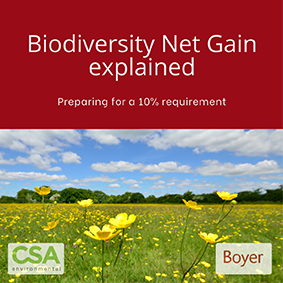New tool for calculating Biodiversity Net Gain

Further to our video about what Biodiversity Net Gain is, Natural England have now published an updated Biodiversity Metric (3.0). This metric will underpin the Environment Bill’s requirement for mandatory Biodiversity Net Gain, which seeks a minimum 10% gain for all development sites.
The metric is a tool for calculating the biodiveristy net gains and losses for development proposals. The final output figure will vary depending upon the loss or gain of different types of habitats and the amounts lost or gained.
Natural England have advised that for projects currently using the previous metric (2.0) the old version should continue to be used unless the client or consenting authority advises otherwise. This is because the new metric is likely to result in different figures.
An additional, simplified version of the metric has been prepared specifically for small (minor) development sites.
The Environment Bill is expected to receive Royal Assent by the end of 2021. A 2 year transitional period is likely to be applied, meaning that the absolute requirement for a 10% net gain is likely to apply in 2023.
However, Boyer are seeing a number of Local Authorities seeking to apply an increased Biodiversity Net Gain in advance of the legal requirement to do so, and indeed, some Authorities are seeking more than a 10% gain. For example, the draft Oxfordshire Plan (consultation due to commence 30 July) proposes to set minimum target for biodiversity net gain of 20% across Oxfordshire.
If you have any questions or would like to discuss Biodiversity Net Gain do get in touch with Boyer.
